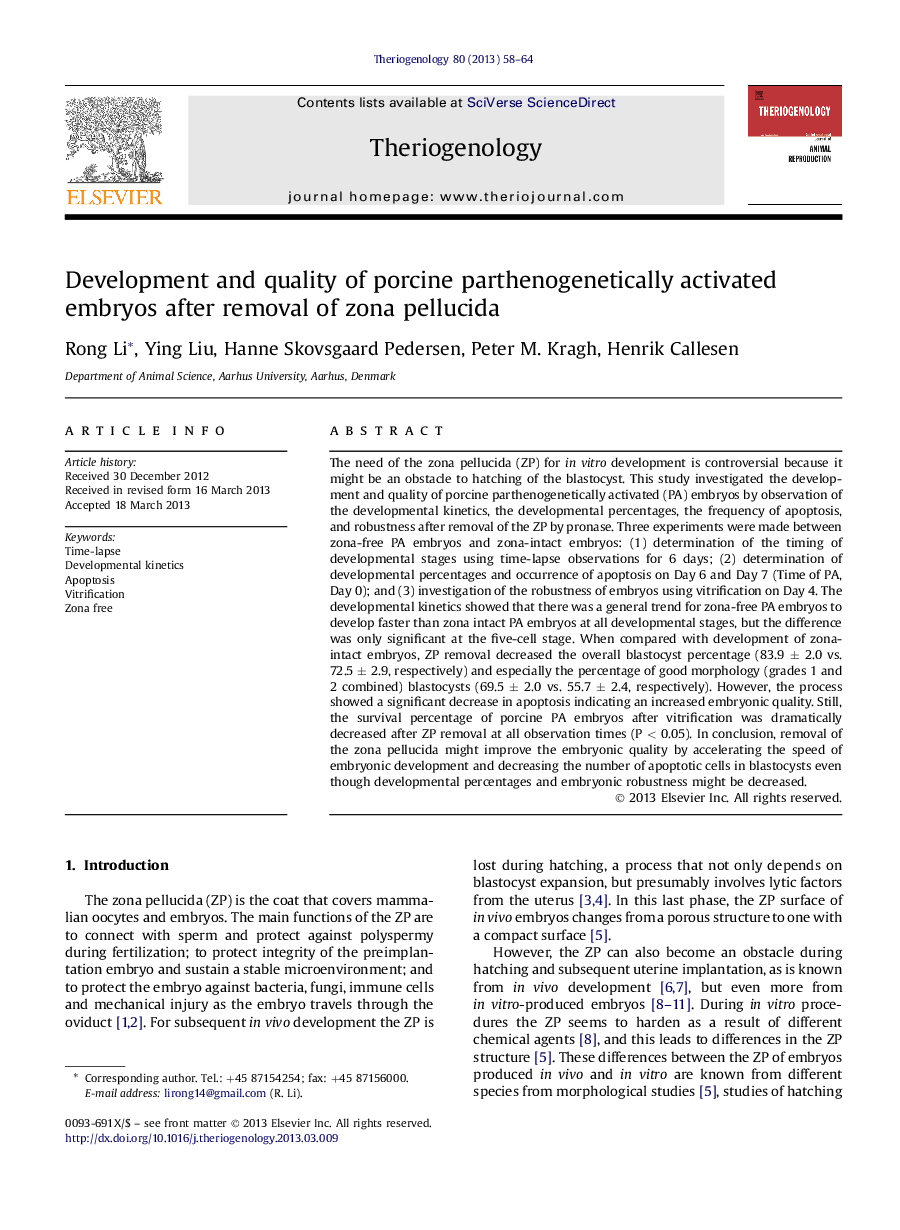| Article ID | Journal | Published Year | Pages | File Type |
|---|---|---|---|---|
| 10894458 | Theriogenology | 2013 | 7 Pages |
Abstract
The need of the zona pellucida (ZP) for in vitro development is controversial because it might be an obstacle to hatching of the blastocyst. This study investigated the development and quality of porcine parthenogenetically activated (PA) embryos by observation of the developmental kinetics, the developmental percentages, the frequency of apoptosis, and robustness after removal of the ZP by pronase. Three experiments were made between zona-free PA embryos and zona-intact embryos: (1) determination of the timing of developmental stages using time-lapse observations for 6 days; (2) determination of developmental percentages and occurrence of apoptosis on Day 6 and Day 7 (Time of PA, Day 0); and (3) investigation of the robustness of embryos using vitrification on Day 4. The developmental kinetics showed that there was a general trend for zona-free PA embryos to develop faster than zona intact PA embryos at all developmental stages, but the difference was only significant at the five-cell stage. When compared with development of zona-intact embryos, ZP removal decreased the overall blastocyst percentage (83.9 ± 2.0 vs. 72.5 ± 2.9, respectively) and especially the percentage of good morphology (grades 1 and 2 combined) blastocysts (69.5 ± 2.0 vs. 55.7 ± 2.4, respectively). However, the process showed a significant decrease in apoptosis indicating an increased embryonic quality. Still, the survival percentage of porcine PA embryos after vitrification was dramatically decreased after ZP removal at all observation times (P < 0.05). In conclusion, removal of the zona pellucida might improve the embryonic quality by accelerating the speed of embryonic development and decreasing the number of apoptotic cells in blastocysts even though developmental percentages and embryonic robustness might be decreased.
Keywords
Related Topics
Life Sciences
Agricultural and Biological Sciences
Animal Science and Zoology
Authors
Rong Li, Ying Liu, Hanne Skovsgaard Pedersen, Peter M. Kragh, Henrik Callesen,
